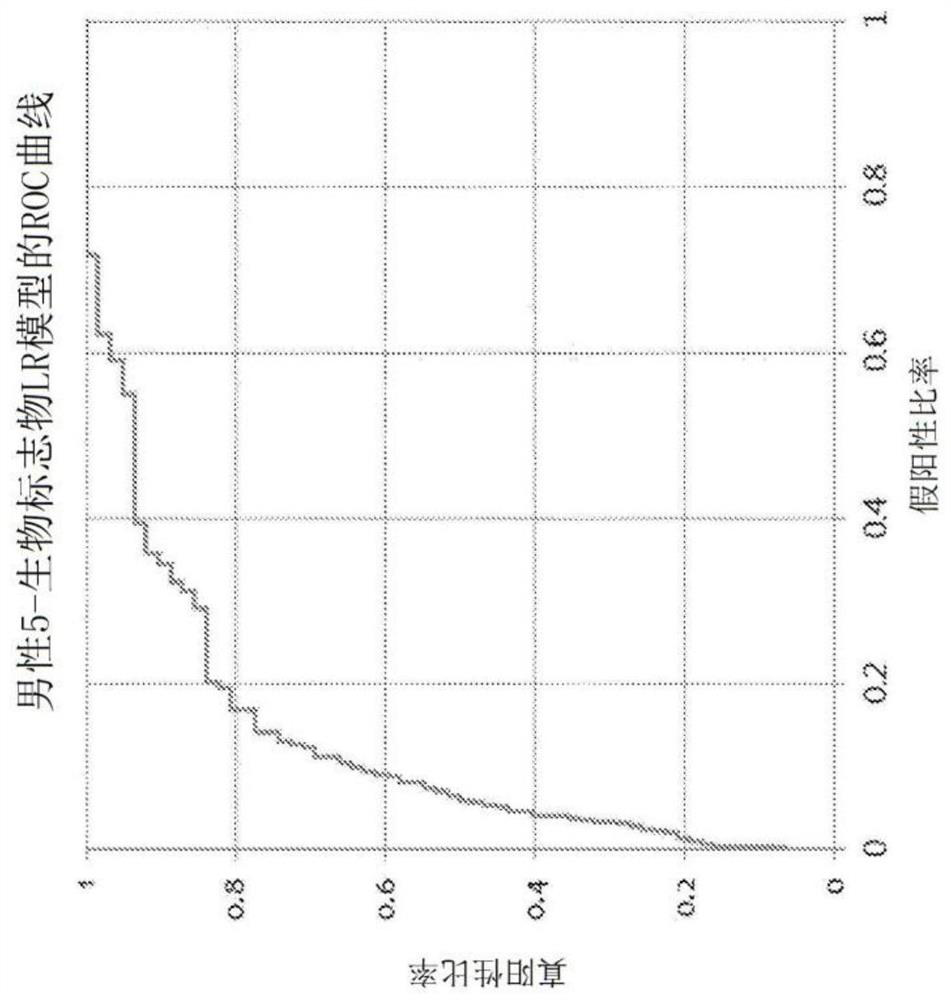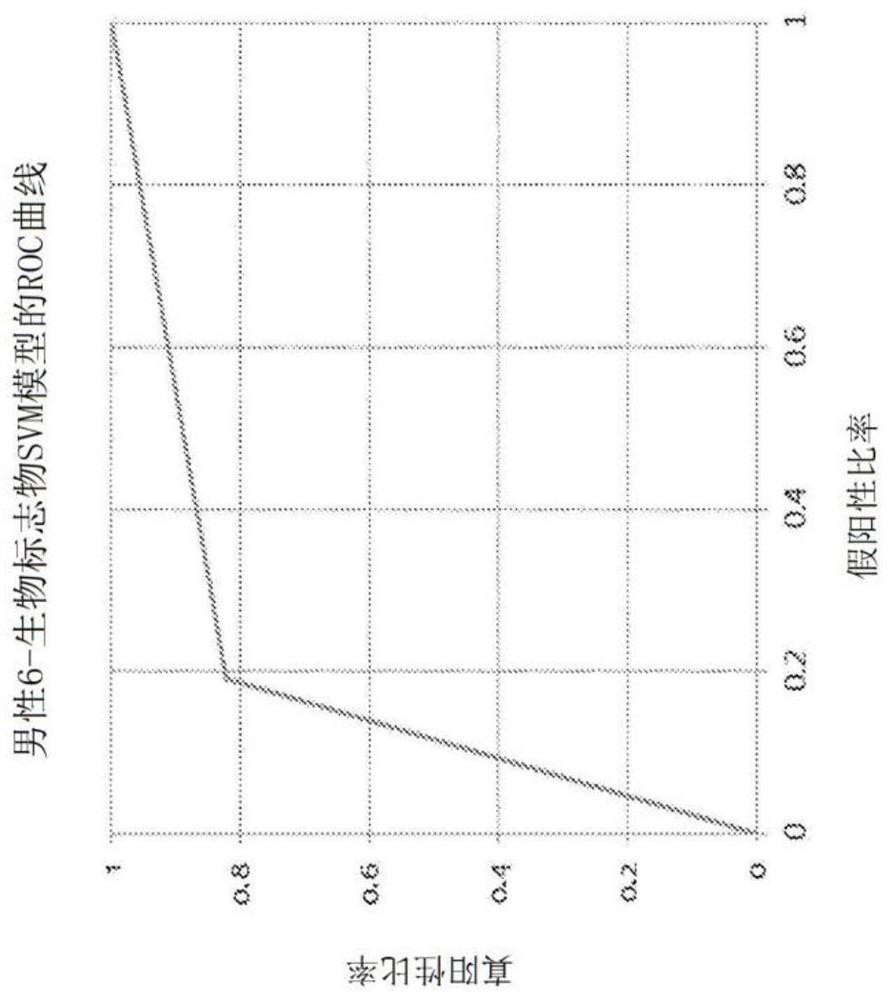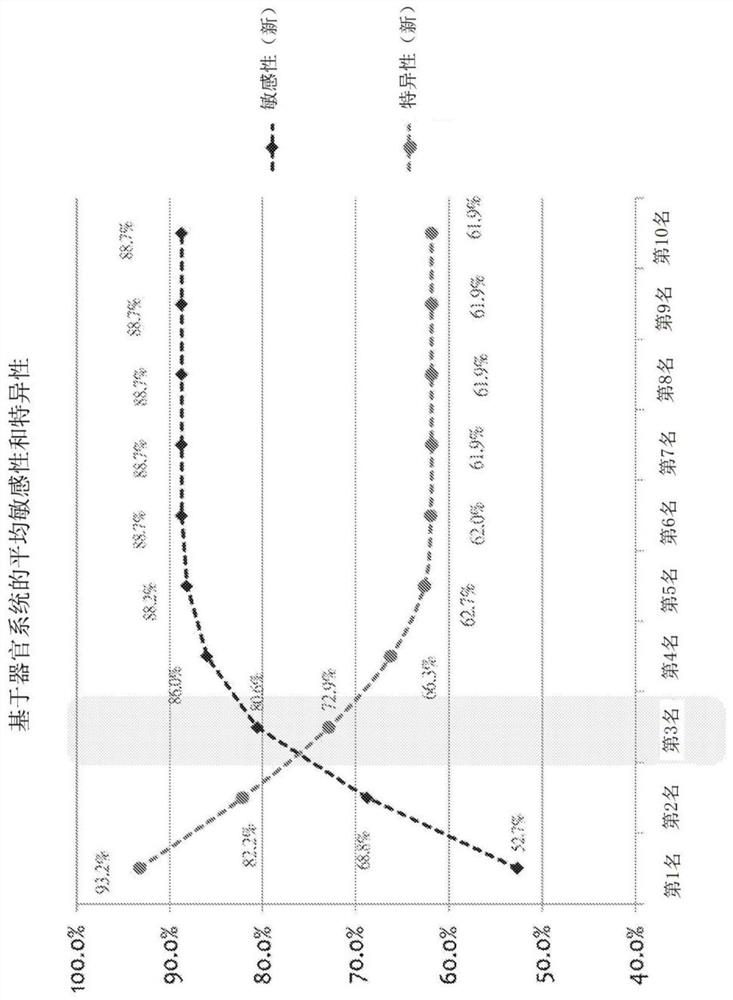Cancer classifier models, machine learning systems and methods of use
A machine learning and classifier technology, applied in machine learning, kernel methods, computing models, etc., can solve problems such as lack of focus, difficult input of patient data, and lack of help for clinicians
- Summary
- Abstract
- Description
- Claims
- Application Information
AI Technical Summary
Problems solved by technology
Method used
Image
Examples
example 3
[0094] In an embodiment, the patient may have or have an increased risk of developing a cancer selected from the group consisting of: breast cancer, cholangiocarcinoma, bone cancer, cervical cancer, colon cancer, colorectal cancer, gallbladder cancer, kidney cancer cancer, liver or hepatocellular carcinoma, lobular carcinoma, lung cancer, melanoma, ovarian cancer, pancreatic cancer, prostate cancer, skin cancer, and testicular cancer.
[0095] In an embodiment, the classifier model is selected based on the gender of the patient. In an embodiment, the input variables for a male patient comprise measurements from a panel of at least six biomarkers and age. In an embodiment, the panel of biomarkers is selected from AFP, CEA, CA125, CA19-9, CA 15-3, CYFRA21-1, PSA and SCC. In an exemplary embodiment, input variables for male patients include measurements from AFP, CEA, CA19-9, CYFRA21-1, PSA, and SCC, as well as age. In other embodiments, the input variables for a female patient...
example 1A
[0163] Example 1A: Development of a multimarker model for classifying asymptomatic patients as having cancer: a "pan-cancer" test
[0164]This article provides a multimarker classification model and method for identifying asymptomatic patients at increased risk of developing cancer. The risk can be classified as "low", "intermediate / intermediate" or "high risk" of developing cancer, where ranges for these categories can be based, for example, on the probability of developing cancer within 6 months to one year, where the probability is relative to Measured at baseline levels of cancer in a heterogeneous population. It is understood in the art that cancer occurs in approximately 1% of the general population. In the population used to develop the pan-cancer test of the present invention, the prevalence of cancer was approximately 1.5%. See the following examples for more details on using tests and probability values. Development of classifier models and selection of markers (b...
example 1B
[0197] Example 1B: Refinement of a multimarker model for classifying asymptomatic patients with respect to having cancer: The clinical factor "age" was included in the model.
[0198] An improved multimarker model for classifying asymptomatic patients as having or developing cancer is disclosed herein. The classifier model described above using only a set of measured biomarkers was previously published with very poor performance on the Receiver Operating Characteristic (ROC) curve for the male population; a sensitivity value of .515 and a specificity value of .851 . The performance of the ROC curve for the female population was even lower, with a sensitivity value of .345 and a specificity value of .880. See Tables 7 and 8: Wang H.Y., Hsieh C.H., Wen C.N., Wen Y.H., Chen C.H. and Lu J.J., “Cancers Screening in an Asymptomatic Population by Using Multiple Tumor Markers” PLoS One, June 29, 2016. In other words, the previous classifier model using only the measured serum biomar...
PUM
| Property | Measurement | Unit |
|---|---|---|
| Sensitivity | aaaaa | aaaaa |
Abstract
Description
Claims
Application Information
 Login to view more
Login to view more - R&D Engineer
- R&D Manager
- IP Professional
- Industry Leading Data Capabilities
- Powerful AI technology
- Patent DNA Extraction
Browse by: Latest US Patents, China's latest patents, Technical Efficacy Thesaurus, Application Domain, Technology Topic.
© 2024 PatSnap. All rights reserved.Legal|Privacy policy|Modern Slavery Act Transparency Statement|Sitemap



